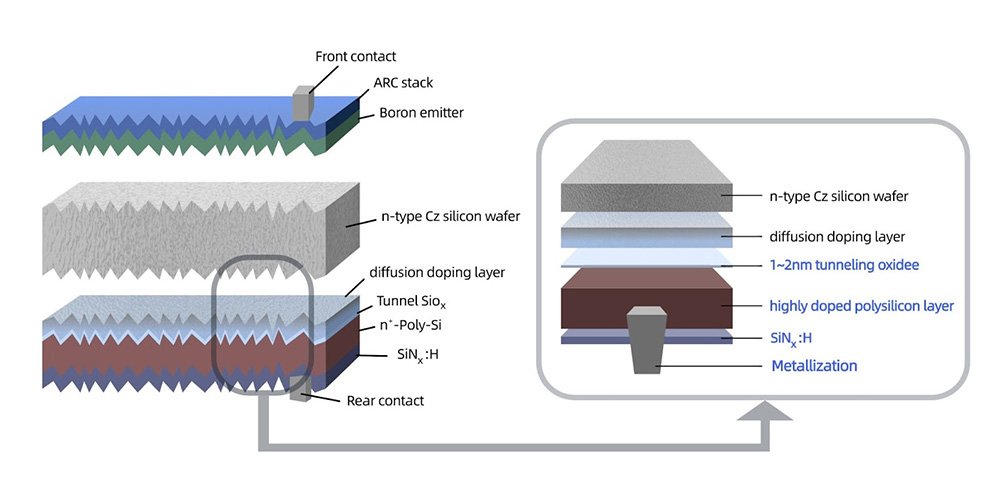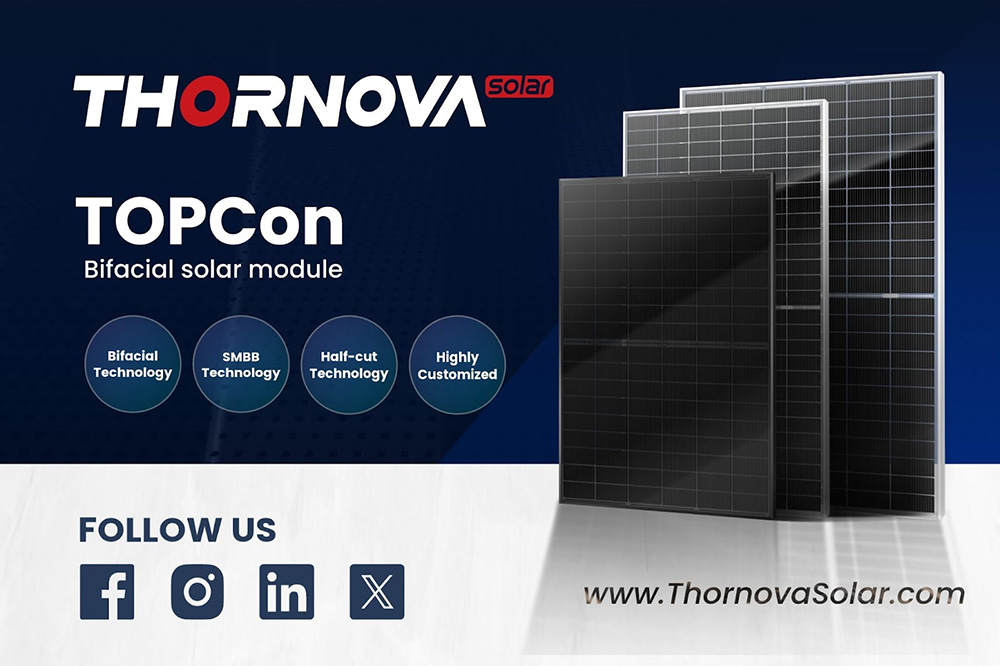In the constant quest for ever more productive and efficient solar technology, N-Type N-type technology has shown promise for its superior performance, efficiency and resilience in solar projects of all kinds. In this blog post, we’ll take a closer look at the advantages of N-type solar technology and examine why it’s becoming the fastest growing solar technology in the industry.
How fast is N-type growing?
N-type solar technology, which stands for Tunnel Oxide Passivated Contact, is quickly gaining traction in the industry. The market share of N-type cells has risen from 3% in 2021 to 8.9% in 2022, and is expected to reach 21.1% in 2023, according to the China Photovoltaic Industry Association (CPIA).
According to PV InfoLink, by the end of 2023, the nominal capacity of N-type manufacturing is expected to exceed 600 GW, and module shipments are expected to reach about 120 GW. The market share of N-type module products in 2023 is expected to reach 25-30%, and is projected to be near 60% in 2024.
How does N-type work?
Traditional solar cells use metal contacts to capture the electricity generated by the cell. While efficient, these contacts can also block some of the incoming light. In a N-type cell, a thin layer of insulating material (1-2nm of tunneling oxide) and a layer of doped polysilicon between the metal contact and the solar cell allows for better electron transport, capturing more solar energy while also protecting the surface of the cell from environmental damage.

Key Advantages of N-type for Solar Installations
Here are some of the key advantages N-type technology provides for residential, commercial and utility-scale solar projects:
1. Higher Efficiency: A significant advantage of N-type technology is its ability to achieve higher conversion efficiencies compared to traditional solar cell designs. The tunnel oxide passivated contacts reduce electron recombination, enabling the cell to harness more solar energy and thus produce higher energy yields from the same amount of sunlight.
2. Improved Bifaciality: Bifacial solar modules have become increasingly popular due to their ability to capture sunlight from both the front and rear sides. N-type technology enhances the bifaciality of solar cells, allowing them to generate power from reflected and diffused light. This makes them ideal for installations in areas with high albedo effect, like snow-covered regions or near water bodies.
3. Enhanced Durability: The passivated contacts in N-type technology reduce the risk of surface contamination and corrosion, making solar modules more durable and longer-lasting. This means they can withstand harsh weather conditions, including extreme temperatures, humidity, and even salt exposure in coastal areas -- enhancing ROI for solar installations.
4. Reduced Degradation: Solar cells using N-type technology exhibit slower degradation over time. The boron content in phosphorus-doped N-type crystalline silicon is extremely low, providing a degradation rate advantage. Thornova N-type modules have a first-year degradation of 1% and a linear annual degradation of 0.4%, significantly better than the 2% first-year and linear 0.45% degradation of PERC modules, leading to higher module power generation gains throughout the lifecycle.
5. Lower Operating Temperatures: N-type technology reduces the operating temperatures of solar cells. This is particularly advantageous because high operating temperatures can lead to reduced efficiency and decreased lifespan in conventional solar cells. The temperature coefficient of Thornova N-type N-type modules is as low as -0.30%/℃, which is superior to the -0.35%/℃ of P-type modules, exhibiting excellent stability in high-temperature environments.
6. Reduced LID: Light-Induced Degradation (LID) is a common issue in many solar cells, which results in a temporary decrease in efficiency after initial exposure to sunlight. N-type cells can effectively respond to both short and long wavelengths, ensuring excellent power generation capability under low light conditions such as early morning, late afternoon, and on cloudy days.
7. Lower Levelized Cost of Energy (LCOE): While the initial investment in N-type technology may be slightly higher than other solar technologies, the increased efficiency and durability lead to a lower LCOE over the system's lifetime. The enhanced performance and reduced degradation offset the initial expense, ultimately making N-type solar modules a very cost-effective choice.

N-type technology is a promising advancement in the field of solar modules, offering higher efficiency, improved durability, and improved ROI for all types of solar projects. Thornova bifacial N-type dual glass products have the added benefit of a 30-year performance guarantee, making them ideal for any size solar project.
For more information on Thornova N-type modules, contact us.


